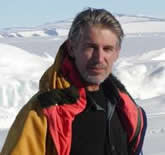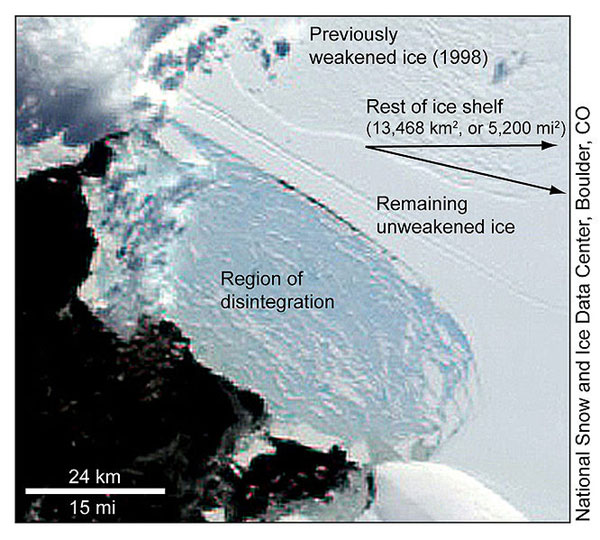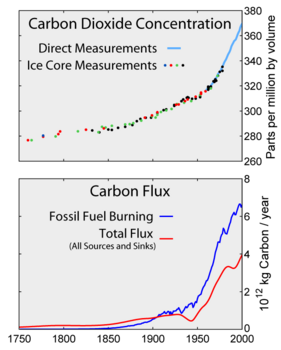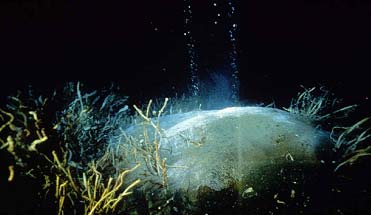Wonderful and caring friends, welcome to Planet Earth: Our Loving Home on Supreme Master Television. This week we are fortunate to speak with Dr. Peter Barrett, Professor of Geology and Director of the Antarctic Research Center at Victoria University of Wellington in New Zealand.
 Professor Barrett has spent over four decades studying the Antarctic with a particular interest in its historical evolution over time.
Professor Barrett has spent over four decades studying the Antarctic with a particular interest in its historical evolution over time.
In the 1960’s Professor Barrett spent 5 years at Ohio State University, USA where he completed his doctorate.
He also worked in Antarctica mapping the continent’s mountains and thus became fascinated by the ancient history of the region.
When he returned to New Zealand, he took part in a deep-sea geological drilling expedition of the ocean floor near the Antarctic.
He discovered that core samples obtained from drilling are the key way to trace the past of the Antarctic continent.
Currently Professor Barrett is taking ice-core samples in the Antarctic to better understand the climatic and chemical changes that have occurred in the area over time.
Supreme Master TV:
You’ve been working on several Antarctic drilling projects for the last 30 years or so. Can you tell us how these projects help us to understand Earth’s past and present climate?
Professor Peter Barrett:
The polar regions are particularly sensitive parts of the planet.
Most of the heat comes in from the Sun on the tropics; it gets circulated down to the poles. But changes are greater in the polar regions than they are in the more central part of the Earth, and what the drilling does is to actually get us a history of climate going back in time. Because the Antarctic is mostly covered with ice, we can’t use exposed rocks like you do on other continents; so drilling is so important.
HOST:
Professor Barrett is also investigating the effects of global warming on the Earth’s ice sheets and the subsequent rises in sea-levels.
Dr. Jay Zwally, a leading American climatologist with the National Aeronautics and Space Administration (NASA) in the United States, has stated that the Arctic could be ice-free by the summer of 2012.
Professor Peter Barrett shared with us the possible repercussions of such an event.
Professor Peter Barrett:
There will be quite profound consequences.
But perhaps first it’s important to say that the changes there are taking place faster than predicted.
Our understanding of ten years ago suggested that this melting wouldn’t take place until later this century.
But we are gaining knowledge so quickly now, it’s important to realize that we must stay apace with this knowledge, so that we can make better judgments about the future.
Image showing Antarctic snowmelt in various areas for the first time (Image Credit - Nasa.gov)
HOST:
Although much discussion has occurred regarding the melting of the Greenland ice sheets, the disintegration of the ice at the Antarctic is also a significant marker of global warming.
This precious place contains 90% of the world’s ice and thus holds most of its fresh water reserves.
If the Antarctic were to completely melt, it could potentially cause a 190-foot or 58 meter rise in sea-level.
This figure does not take into account thermal expansion, or the increase in the volume of water when it is heated, which could further raises the height of the ocean.
Professor Peter Barrett:
In the last four years, the scientific reports, not only from the Antarctic, though these are serious, but also from the tropical regions, make it quite clear that it’s human CO2 or greenhouse gas emissions that are causing these changes we’re observing.
And I’m just mindful of the Nobel Peace Prize that was awarded to Al Gore and the Intergovernmental Panel on Climate Change. It was a Peace Prize because of the work that that committee has done to understand and advocate for the management of the climate problem.
HOST:
The Antarctic can be divided into three main areas: the Peninsula, the West Antarctic and the East Antarctic.
In March 2008, a large part of the Wilkins Ice Shelf located in the Peninsula, measuring about 405 square kilometers, separated from the Peninsula.
In January 2009, it was reported that the entire Shelf, which measures more than 14,000 square km, is near total collapse.
Professor Peter Barrett:
In the case of the Wilkins Ice Shelf, this is significant because the Antarctic Peninsula, is warming faster than almost anywhere else on Earth.
The warming rate, it’s like two-and-a-half degrees in the last 50 years; that’s also true of the Arctic and Siberia but most of the rest of the Earth is not that fast.

2008 partial collapse of the Wilkins Ice Sheet, showing ice strip holding back further collapse
(Image Credit - the National Snow and Ice Data Center)
And that is now recognized as a response to this warming, which itself is a part of the larger global warming, which we’re now starting to experience.
It represents a warning!
Professor Peter Barrett:
With the knowledge that we now have of Earth’s history and carbon dioxide levels in the past, it’s quite plain that we are moving now into a very dangerous period of climate change.
In our own work in Antarctica, the West Antarctic Ice Sheet collapsed, or simply wasn’t present.

We have good records of this, three- or four-million years ago, at a time when CO2 levels were less than 400 parts per million and we are now approaching that.
Now, this is a situation where we don’t expect that the moment it reaches that point the Antarctic will respond, but what it does mean is that we have, actually, the climate in which that will eventually take place.
First, the sequence is very clear– the ice shelves break out first.
You’ve mentioned the Wilkins Ice Shelf, that’s further north but that’s already happening.
The Ross Ice Shelf is much bigger; it will need a rise in temperature, of four or five degrees. But that could happen within a few decades and then once that goes, that releases the ice in West Antarctica.
So it’s hard to say what’s worse – it actually happening now, or a civilization that lives in the knowledge that it will happen, and that sea level will rise about 10 or 15 meters as a consequence.
HOST:
Welcome back to Planet Earth: Our Loving Home, where we have been speaking with Professor Peter Barrett of the Victoria University of Wellington, in New Zealand on the melting Antarctic ice sheets.
The melting of the polar ice caps is exacerbated by a feedback mechanism known as the “albedo flip,” whereby human-induced global warming heats the atmosphere and ocean, thus melting the ice sheets.
As ice acts like a mirror and reflects some of the sun’s rays back out to space, the increased ice melt allows more of the sun’s energy to enter the ocean, thus further warming the water and causing an increase in the melting of the ice.
This situation is made worse by the subsequent release of methane and other global-warming gases from the Earth’s frozen permafrost.
Professor Barrett explains more about this imminent danger.
Professor Peter Barrett:
There is another risk with methane and that is the fact that billions of tons are stored in a solid form beneath the oceans, and in a warming world these could be released.
 And At the moment in the Arctic, methane is bubbling away; it’s been observed in the last year.
And At the moment in the Arctic, methane is bubbling away; it’s been observed in the last year.
The melting of permafrost releases more methane and nobody knows just when some sort of point will be reached when there will be a cataclysmic dissociation, a discharge of methane.
This is a very good reason to keep global temperatures as low as possible.
HOST:
In such critical times, the world needs sound solutions and immediate actions both at the individual and governmental levels.
Professor Barrett explains.
Professor Peter Barrett:
I just see a very obvious moral obligation.
You can make it more personal by the notion of a personal carbon footprint. In my country, our carbon footprint is about four tons of carbon per year per person. This is large. In countries like India or China it’s much less than one ton; even though the emissions might be large the individual footprint is small.
So because the core problem is carbon dioxide, in particular, it’s a gas that is very long-lived, and so I see it as our responsibility to reduce and eliminate carbon dioxide emissions so that the Earth can have its balance restored.
Supreme Master TV:
What do you see as the important actions that need to be taken from a leadership level?
Professor Peter Barrett:
To me the most important thing is to acknowledge the problem and to advocate ways of dealing with it at every level.
And To me the outstanding example of this is Barack Obama, (he) made a very clear statement and which I would love to be able to quote completely; but to me it was quite a relief and quite inspirational.
He was essentially saying that the science is understood, the problem is great, it can no longer be denied, we must act now.
Supreme Master TV:
And what changes would you encourage on an individual level to reduce climate change?
Professor Peter Barrett:
There are many, and I actually think individual action is just as important as governmental action. and The reason is that I think we personally need to feel both positive and challenged, and to feel that we are making the biggest difference we can.
And so the sort of actions I think in terms of our thinking, to live simply; to think about what we do and to really use as little energy as possible.
HOST:
According to the United Nations Food and Agriculture Organization report entitled “Livestock’s Long Shadow,” the livestock industry is responsible for producing more greenhouse-gas emissions than all the transport in the world combined including cars, planes and ships.
Nobel laureate and chairman of the International Panel on Climate Change, Dr. Rajendra Pachauri has also stated that one of the most effective ways to reduce our carbon footprint is to stop the consumption of meat.
In fact, according to a study by Drs. Gidon Eshel and Pamela Martin, assistant professors of geophysics at the University of Chicago, USA, the carbon footprint of a meat-based diet is 1.5 tons heavier than that of a plant-based diet per person per year.
We asked Professor Barrett for his views on the benefits of a vegetarian diet with regard to climate change.
Professor Peter Barrett:
I can see the benefits of a vegetarian diet very clearly. I have reduced my meat intake quite significantly, and I will continue to do so.
I think a move in that direction, towards a vegetarian diet, is really a very important part of the changes that we need to make.
HOST:
Named Wellingtonian of the Year in 2006, Professor Barrett concluded the interview with some words of encouragement and hope for the planet and its inhabitants.
Professor Peter Barrett:
I think there are quite a few examples around the world, in our history, where there have been positive changes.
I’m quite sure this is what we will get to eventually.
The only question is how much damage do we have to suffer in the process?
This is why urgency is important, the next few years are important.
James Hansen has been outstanding in the way that he makes this clear. His goal of 350 parts per million, I think we must really simply acknowledge and aim for.
Now, we have exceeded that, but the challenge is for a mix of our technology and a changed way of life to reduce CO2 levels down to 350 parts-per-million and try to really get us out of the danger zone.
HOST:
With both the Arctic and Antarctic ice caps melting, urgent action is needed to reduce carbon, methane and other greenhouse gas emissions to restore balance to our beautiful planet.
The simplest and quickest way to stop global warming, that everyone can do easily and immediately, is to adopt a plant-based, vegan diet, which also happens to be exceptionally good for one’s health.
To close our program, we would like to extend our gratitude to Professor Peter Barrett for his wise words and precious time.
For more details on professor Peter Barrett, please visit:
http://www.victoria.ac.nz/antarctic/people/peter-barrett/index.aspx